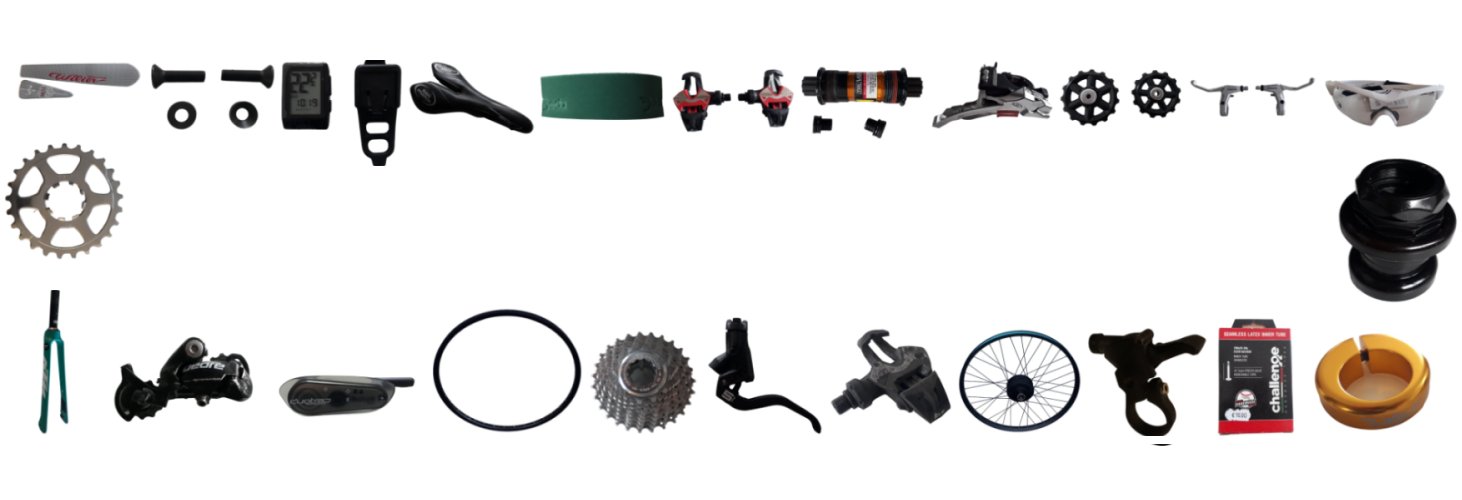SL Sport equipments : parts and accessories cheap !
Discover our Universes
Notre sélection de pièces et d'accessoires de vélo
More than 350 bike brands available in stock for road bike, gravel, mountain bike, fixie, single speed, freestyle, race or street BMX, electric bike, city bike, or kid bike, vintage bicycle parts, bicycle maintenance products and tools, ... , as well as a bike blog containing guides and advices.
The bike an object of freedom and pleasure :
The bicycle is an ecological, economical leisure and transport equipment with a lifetime of several years.
Its use and its configurations developed during the end of the nineteenth century, during the twentieth and then the twenty-first century. The balance bike was transformed into a large bi before becoming a city bike then a racing bike, a BMX, a mountain bike, a mountain bike, a fixie, a single speed and finally the electric bike and the gravel that we know today.
Cycling is a popular sport practiced all over the world motivated by major international competitions such as the Tour de France, the Giro or the Vuelta.
Bike parts, a technical architecture :
A bicycle is made up of more than a hundred parts which for some may be specific to the model or to the brand, others are wearing parts to be replaced regularly and operating parts which if they are well maintained may have long service life.
Technical progress is very fast, manufacturers are designing equipments for a specific use such as freeride or cross country in mountain bike, freestyle in BMX, the time trial for the road bike. New materials such as carbon or titanium are used to increase performance, improving stiffness and comfort while reducing weight. The new versions of bicycle drivetrain, frame, wheels, ... make the previous ranges obsolete and are sometimes incompatible with each other. In fact, the number of speeds has been increased from 1 to 12 speeds with the choice of an electrical or mechanical control.
SL Sport equipments what is it ?
SL sport equipments is an online store created on this observation in order to make available for as long as possible parts that are no longer produced by manufacturers and latest generation equipment at the best price for all occasional or regular users, competitors, collectors and cycle repairers. We offer more than 350 brands of bicycle equipment in revised used condition or new from clearance.
SL Sport equipments are also advices, tutorials and cycling news in our blog dedicated to cycling.
All the biggest bicycle brands are represented as the manufacture of small volume or those that have disappeared: Campagnolo, Shimano, Sram, Huret, Simplex, TA, Mavic, Mach 1, Rock Shox, Magura, Sachs, Michelin, Hutchinson, Sigma , Extra+, Fizik, Race Face, are some examples of brands available in stock in our website.
The components, parts and accessories that we offer are intended for all cyclists regardless of their level of practice.
Quality and provenance of the bike parts offered :
Second-hand bike parts and accessories presented are cleaned and checked, their state of wear is noted from 0 (for parts) to 10 (new in its packaging). New components are offered at the best price because they come from overstocks or clearance. We get our supplies from bicycle partners who regularly offer us new components and we buy stock from shops that have closed, such as acycles, kompressor bike, macadam cycle or rando cycles.
All types of parts are available: structural components such as the frame, fork or wheels, operating such as shifters, derailleurs, crankset, pedals, ... and wearing parts such as brake pads, tires, chain, cassette, grips, ...
Return of products:
In the event of a product that does not meet your needs, you can return it to us within a period of 14 days after receipt, we will then issue your refund.

Bicycles brands







